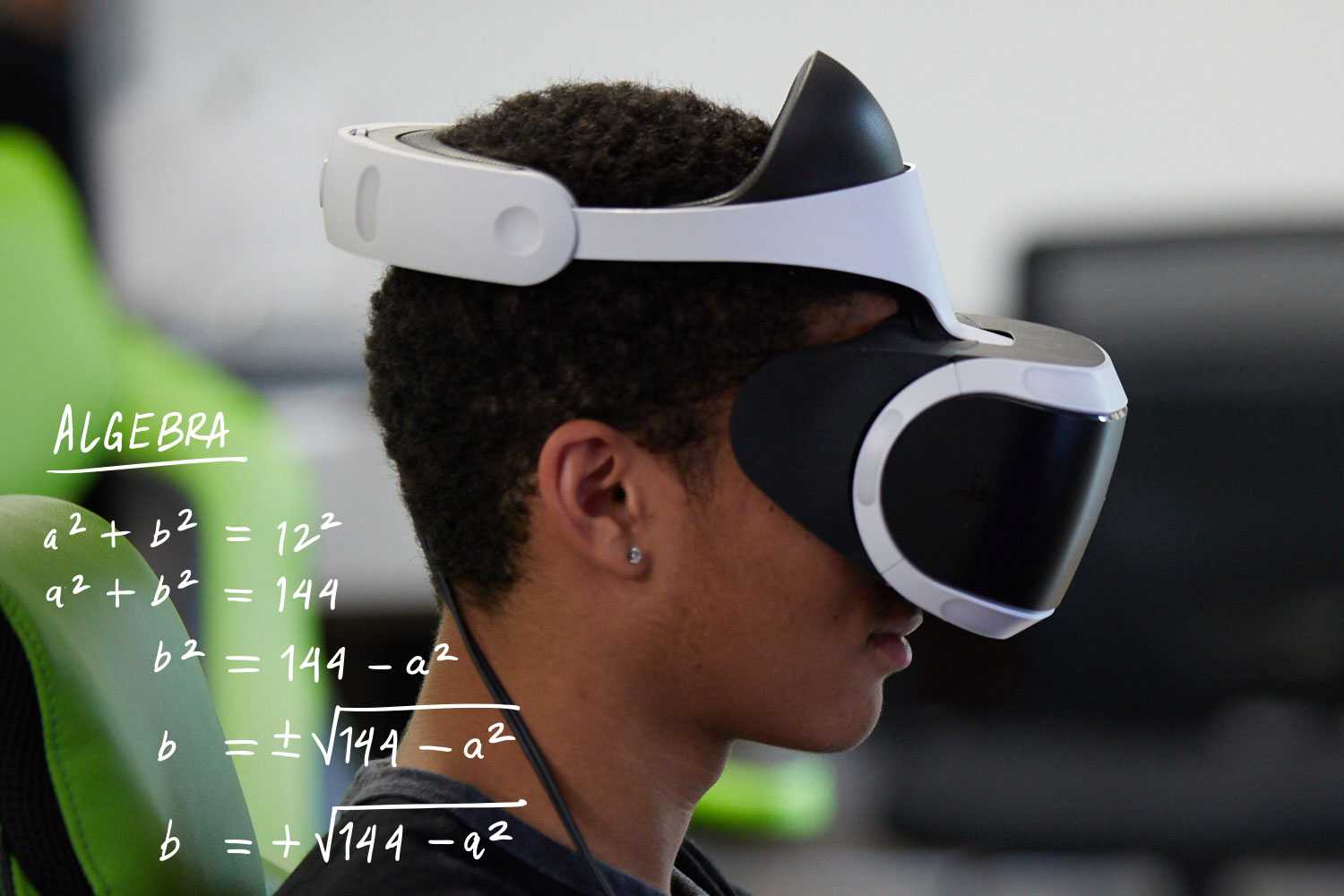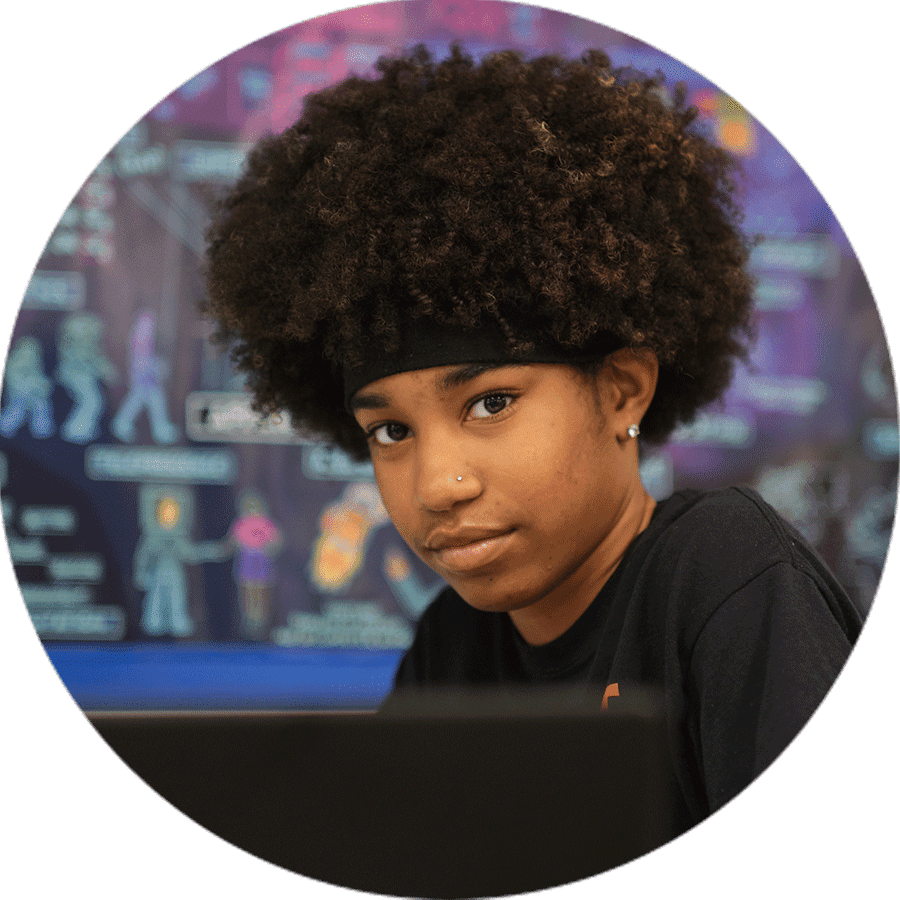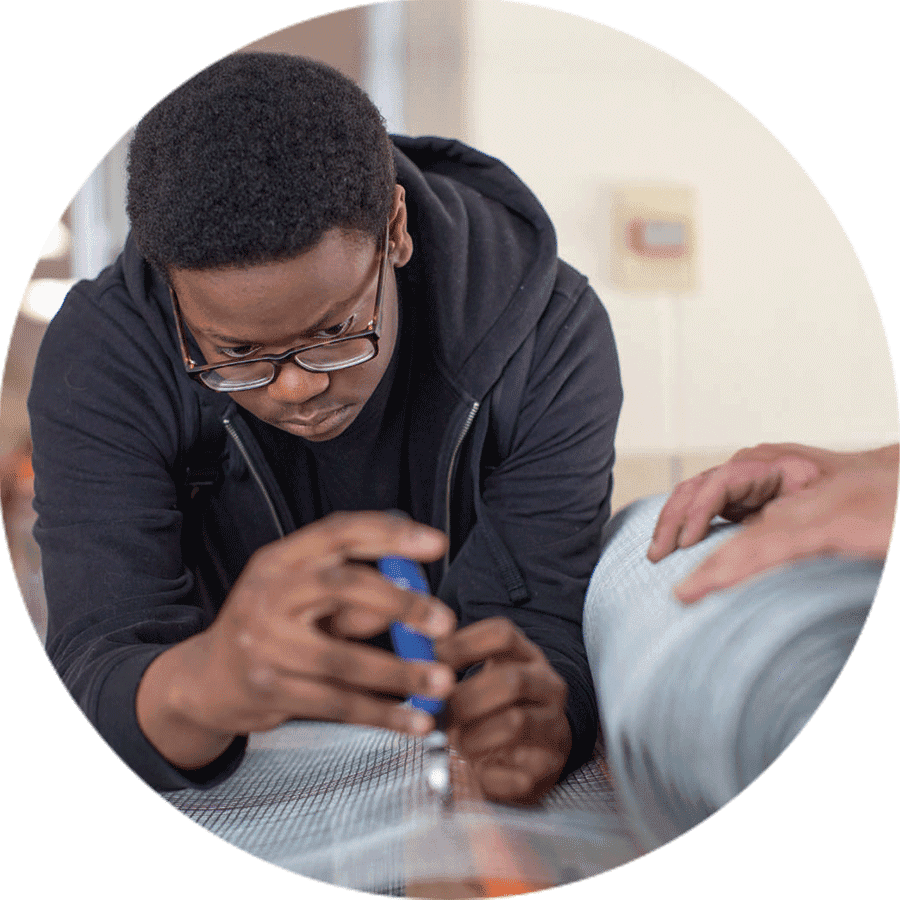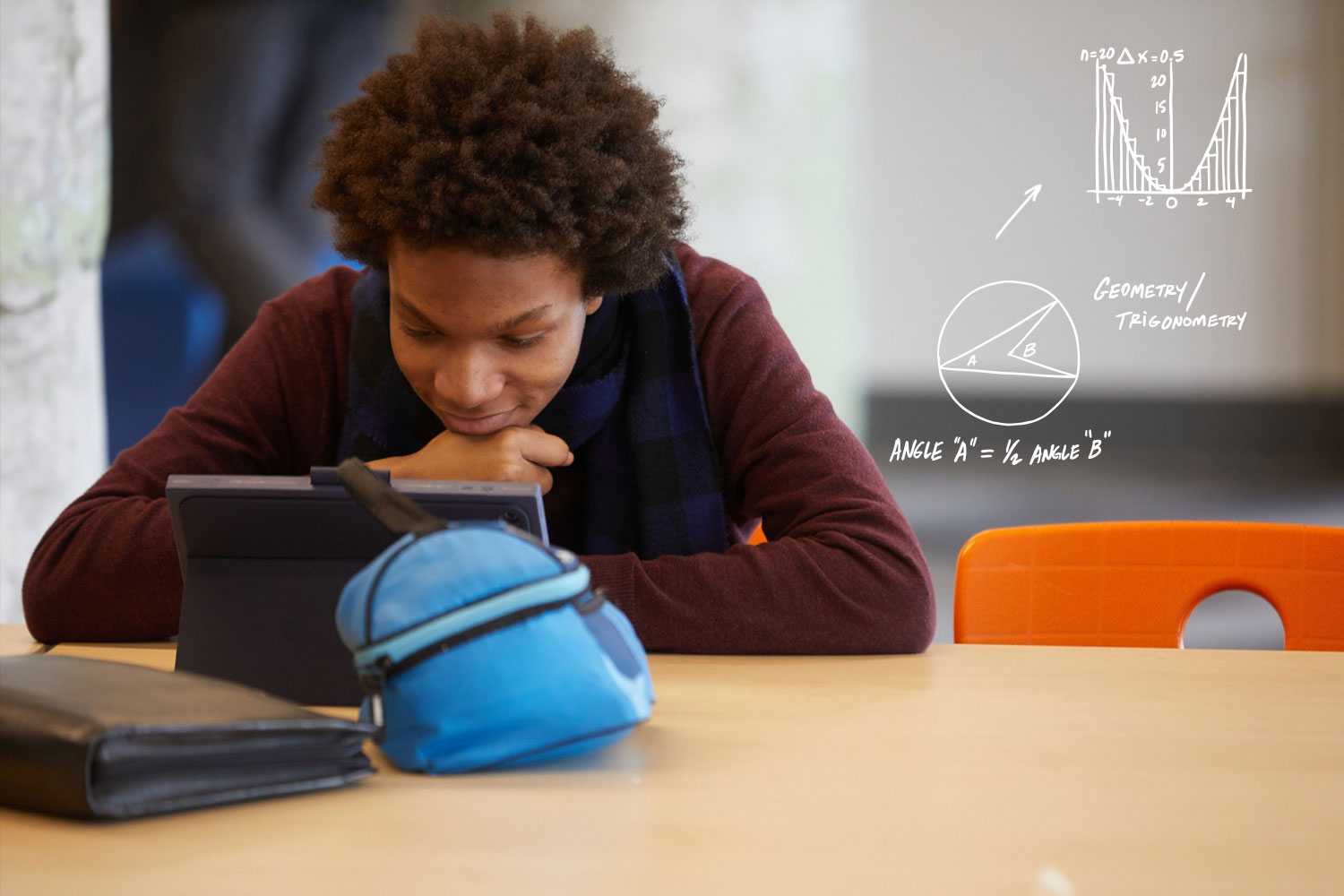3. Smart use of technology is essential to a great school design.

How can technology work in service of strengthening relationships and deepening learning?
Fact:
In 2019, 51% of teachers said they were confident that digital technology could help customize instruction, but 48% were concerned it could lead to students working alone too often.
Source: Education Week 2019 survey of teachers.
Education technology has the potential to expand the capacity and efficiency of educators, personalize student learning, and increase access to enriching experiences and information. These changes are important—not just for enhancing student learning today, but also for preparing students to thrive in the technologically advanced environments of tomorrow.
In the past decade, schools have taken great strides in harnessing technology to encourage and empower student learning. As of late 2019, nearly every school had access to high-speed internet, enabling educators to leverage a vast array of digital learning tools for students during the hours they are inside the school building. Yet issues of equity remained: low-income students and students of color had less access to tech at home, leading to a “homework gap” caused by the digital divide in many communities.
The problem of the digital divide came into sharp focus in 2020, as COVID-related school closures and disruptions pushed educators everywhere to confront the accessibility challenges of remote teaching and learning. For many, the first order of business was getting computers and Wi-Fi into students’ homes, as it became clear that even a student with a computer and Wi-Fi at home might be sharing that equipment with multiple family members.
Creative schools continued to invent, tapping into technology to stay in touch with students and enable meaningful remote learning while school buildings were closed. Schools like Crosstown High in Memphis gave students simple online tools to manage their weekly assignments, consistent with the school’s vision for developing students who are “Learners for Life,” an XQ Learner Goal. Elizabethton High in Tennessee and Purdue Polytechnic High School in Indiana recruited outside experts to serve as advisors and panelists for virtual student presentations. Many high schools launched or expanded their use of online learning management systems, scheduling tools, and video conferencing applications.
There is much to be learned from these experiences, as schools search for lessons on how best to incorporate technology meaningfully into the educational experience. The right tools and techniques are those that advance a school’s vision for teaching and learning, meet the needs of educators and students, and help the entire school community stay authentically connected, even in challenging times.
Leveraging technology creatively and effectively involves:
- Thinking strategically about how and why to use technology
- Seeking out expertise about what tech can and can’t do for education, particularly in light of your own unique design for teaching and learning
- Exploring the full range of technological solutions available and tradeoffs among them
- Assessing cost and accessibility issues for all students and families and making necessary accommodations
- Considering data privacy and security issues
- Giving educators and students opportunities to inform and offer feedback on possible ed tech choices
- Providing support for educators to use new tools and asking them for feedback on how they’re working
Dive Deep
![a student smiling]() Digital Promise Edtech Pilot Toolkit
Digital Promise Edtech Pilot ToolkitHow do you run a successful education technology pilot in your school? This toolkit walks you through the eight steps and offers tips and tools along the way.
Read![student looking forward]() Project Unicorn
Project UnicornWhen technology works well, it can unlock insights into student learning and save teachers a lot of time. The key to all that is data interoperability.
Read![woman smiling]() Intentional Equity through Remote Learning
Intentional Equity through Remote LearningListen in to this Aurora Institute discussion among XQ school leaders on how the shift to remote learning opened up opportunities to advance equity.
Read![a student cutting material]() Blended Learning at Eastern High
Blended Learning at Eastern HighHear from students and teachers at a Washington, D.C., high school that moved from lecture to a student-centered, tech-powered model of blended learning.
Watch
Analyze
According to the International Society for Technology in Education (ISTE) Standards for Students, a prepared learner is someone who embodies these “seven ways” of being future-ready:
- Empowered learner
- Digital citizen
- Knowledge constructor
- Innovative designer
- Computational thinker
- Creative communicator
- Global collaborator
Step 1 – Research
Review the ISTE standards and discuss them with others. How do these seven capacities show up in your own work, family, and community lives today? What changes have you observed, if any? What are the implications for today’s students?
Step 2 – Reflect
Share observations with your team and discuss the following questions:
- How will your school cultivate each of the future-ready capacities in your students?
- How will technology help? What tools (hardware and software) are “must-haves”? What are some “nice-to-haves”?
- What preparation and supports will help teachers and students use those tools well?
- How will you ensure that learning technology is fully accessible to every student and family?




